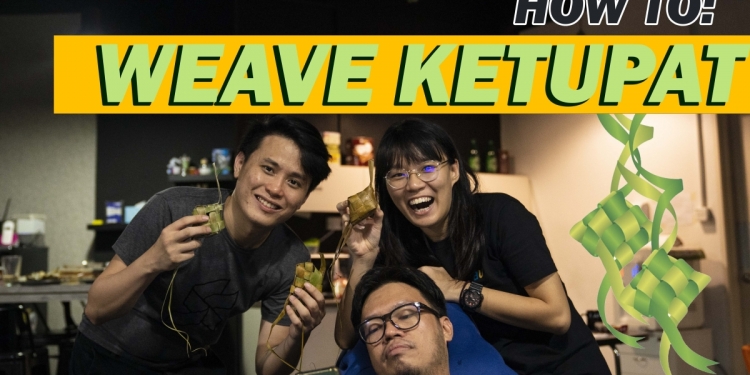On today’s episode of HTWI (How-To-What-Is), Ray and I try our hands at weaving (menganyam) the iconic Malaysian dish, ketupat. Despite a very different Hari Raya this year due to the COVID-19 pandemic, Malaysians have continued to celebrate the festivities—albeit with celebrations in line with the government’s mandated precautions.
Click here to skip to the tutorial in the video.
For some context, here’s an unofficial definition of ketupat:
Ketupat is a type of dumpling made from rice that is packed inside a diamond-shaped container woven from young coconut leaves. It is traditionally eaten during Hari Raya festivities with rendang and other dishes, in place of steamed rice, and symbolises forgiveness.
With the MCO/CMCO/RMCO in place as Malaysians work together against the spread of COVID-19, an interesting skill to pick up (and impress your elders with) is the art of weaving ketupat. But don’t take it lightly—this is probably the most difficult HTWI episode we’ve shot so far.
Long story short, weaving ketupat is certainly a skill that is very difficult to master. It’s a delicacy that has a history steeped in tradition, and it’s a big part of Malaysian culture. But if you’re planning on weaving your own ketupat for the next Hari Raya celebrations, or if you simply want to pick up the skill for fun, regular practise is key.
Thankfully, some of our colleagues at SoyaCincau were better equipped than we were at mastering the art of weaving. Special shoutout goes to Najib, our colleague from SoyaCincau BM who lent his expertise to providing this tutorial for everyone. And of course, remember the basic principle of weaving ketupat: atas, bawah, atas, bawah (up, down, up, down).
Let us know if the tutorial helped you with your own ketupat-making efforts at home in the comments section below! And as always, keep SoyaCincau.com bookmarked on your browser for future content.








